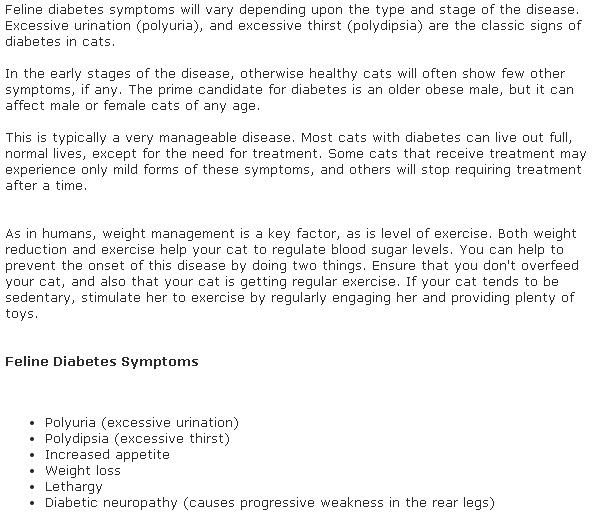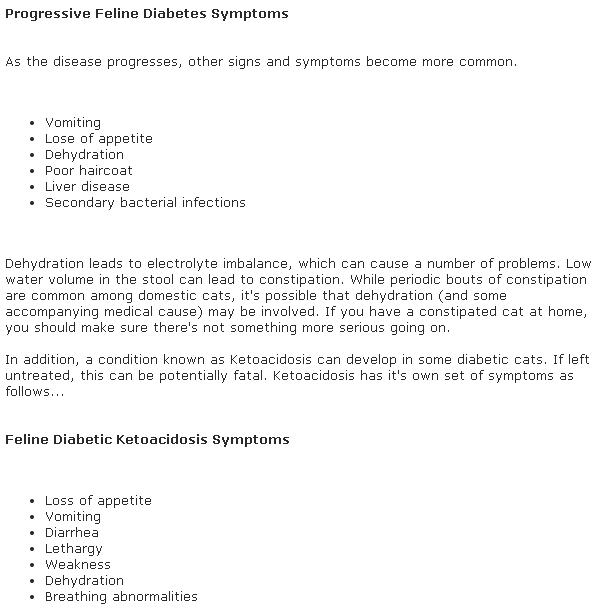The Symptoms of feline diabetes
Feline diabetes is also commonly called feline diabetes mellitus and affects about 1 in 400 cats. This condition is caused by insufficient production of insulin by the beta cells in the pancreas or poor response of cells to insulin . As you may know , insulin is secreted by the pancreas directly into the circulation. It acts on the cell membranes , allowing glucose to enter the cells , where it is used for energy. Without insulin , the body can not use glucose , which leads to hyperglycemia (high blood sugar).
Once excessive blood sugar is recognized kidneys slam into high gear to eliminate excess glucose , the production of frequent urination . This leads to excessive thirst in cats with diabetes. In addition, your cat will first make an attempt to compensate for excessive levels of glucose in the blood by eating more food. Later, as the adverse effects of feline diabetes set in a dramatic drop in appetite will occur.
In summary, the early stages of feline diabetes are:
- Frequent urination
- The excessive water consumption
- Increased appetite followed by a decrease in appetite
If it is not treated or if treatment fails a myriad of symptoms (some serious ) will appear .
These include :
- Bad breath
- Loss of appetite
- Vomiting
- Weakness
- Dehydration
- Labored breathing
- Fatigue
You 've probably noticed that cataracts are not listed above. This is because unlike cats rarely develop cataracts dogs. In addition, another indication of feline diabetes walks in the legs instead of the toes.
In summary , early recognition of feline diabetes ( cat ) is very important. If you fell on your cat may be exhibiting symptoms , you should not waste time doing audits . Your vet will probably need a sample of blood and urine to confirm your suspicions .
Once confirmed, you will be faced with a number of treatment options , including dietary management , prescription drugs , insulin injections , or alternative natural treatment. A combination of changes in diet combined with daily insulin injections is the treatment most likely to be offered. For mild cases many pet owners are opting for a natural treatment option for feline diabetes . These all natural formulas can be used both as a primary treatment or extra and are very safe.












